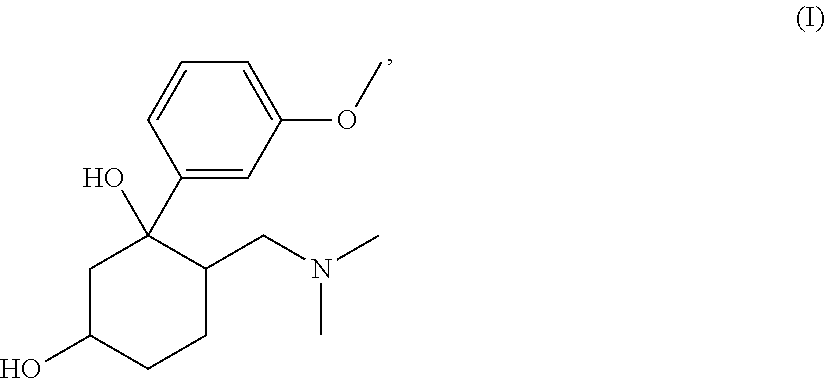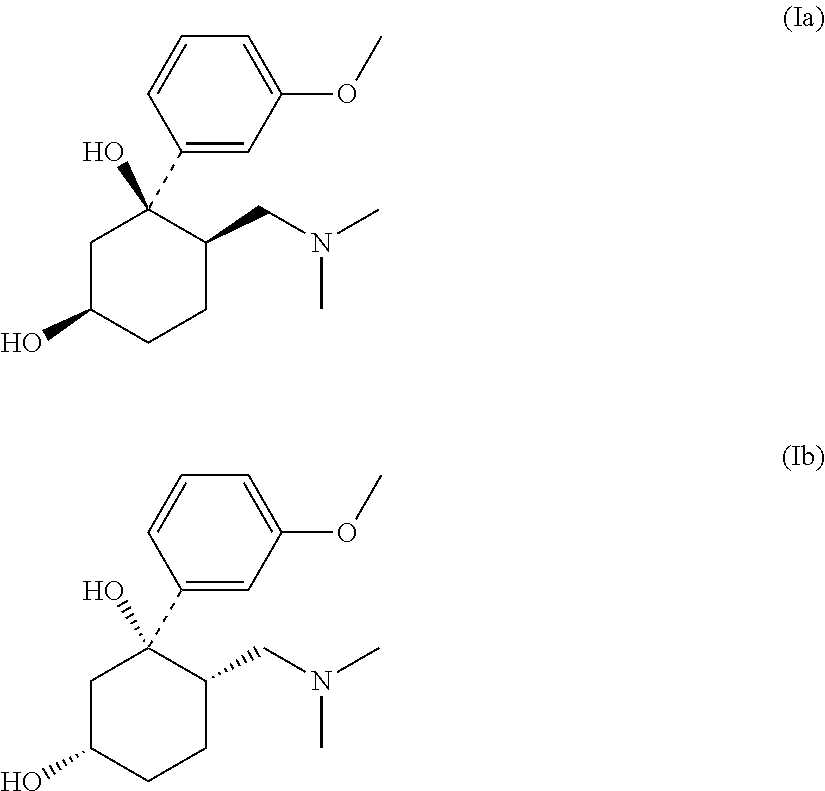Pharmaceutical Combination Comprising 6-Dimethylaminomethyl-1-(3-methoxy-phenyl)-cyclohexane-1,3-diol or 6-Dimethylaminomethyl-1-(3-hydroxy-phenyl)-cyclohexane-1,3-diol and an Antiepileptic
- Summary
- Abstract
- Description
- Claims
- Application Information
AI Technical Summary
Benefits of technology
Problems solved by technology
Method used
Image
Examples
Example
[0089]The following examples serve to explain the invention in more detail, but should not be interpreted as restrictive.
Pharmacological Methods:
1. Paw Incision Model in Rats
[0090]The paw incision model (Brennan, T. J., Vandermeulen, E. P., Gebhart, G. F., Pain 64, (1996), 493-501) is an animal model of post-operative pain.
[0091]In male Sprague Dawley rats (body weight 180-200 g) a longitudinal incision of 1 cm length is made, starting 0.5 cm from the proximal end of the paw, through the skin and fascia. Using bent tweezers the muscle is lifted up from the bottom and incised lengthwise, flat and centered using a scalpel. The muscle is spreaded bluntly with the tweezers. Subsequently, the wound is closed with two sutures.
[0092]The tactile hyperalgesia two hours after the operation is determined using an electronic von Frey filament (Somedic Sales AB, Hörby, Sweden). For this purpose the animals are put into a plastic box with a lattice base. With the use of the von Frey filament the ...
PUM
| Property | Measurement | Unit |
|---|---|---|
| Dimensionless property | aaaaa | aaaaa |
| Dimensionless property | aaaaa | aaaaa |
| Dimensionless property | aaaaa | aaaaa |
Abstract
Description
Claims
Application Information
 Login to View More
Login to View More - R&D
- Intellectual Property
- Life Sciences
- Materials
- Tech Scout
- Unparalleled Data Quality
- Higher Quality Content
- 60% Fewer Hallucinations
Browse by: Latest US Patents, China's latest patents, Technical Efficacy Thesaurus, Application Domain, Technology Topic, Popular Technical Reports.
© 2025 PatSnap. All rights reserved.Legal|Privacy policy|Modern Slavery Act Transparency Statement|Sitemap|About US| Contact US: help@patsnap.com



